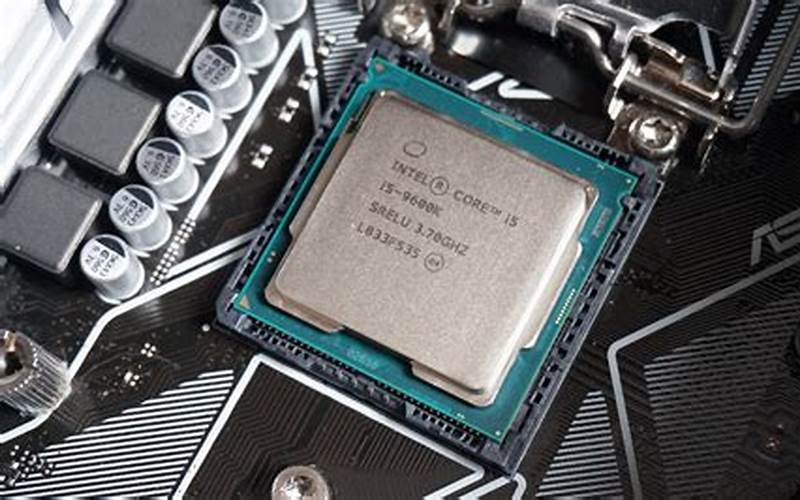Introduction
The CPU, or central processing unit, is often referred to as the "brain" of a computer. It is responsible for executing instructions and performing calculations that allow a computer to function. This article will explore the different parts of a CPU and their roles in the overall operation of a computer system.
Motherboard
 Source: tse1.mm.bing.net
Source: tse1.mm.bing.net The motherboard is the main circuit board of a computer system, and it serves as a platform for other components to connect to. It provides communication channels for different parts of the CPU to interact with each other. The motherboard houses the CPU socket, which holds the processor in place and allows for communication between the processor and other components.
Processor
 Source: tse1.mm.bing.net
Source: tse1.mm.bing.net The processor, also known as the central processing unit, is the most important component of a CPU. It is responsible for executing instructions and performing calculations. The speed and capabilities of the processor greatly affect the overall performance of a computer system. Processors can have multiple cores, which allow them to handle multiple tasks simultaneously.
RAM (Random Access Memory)
 Source: tse1.mm.bing.net
Source: tse1.mm.bing.net RAM, or Random Access Memory, is a form of computer memory that allows data to be read or written in any order, regardless of the location of the data. It provides temporary storage for data that is actively being used by the processor. The amount of RAM in a computer system affects its ability to handle multiple tasks and run complex programs.
Cache Memory
 Source: tse1.mm.bing.net
Source: tse1.mm.bing.net Cache memory is a small amount of high-speed memory located within the CPU. It is used to store frequently accessed data and instructions, allowing the processor to quickly retrieve information without having to access the slower main memory (RAM). Cache memory helps improve the overall performance of a computer system by reducing the time it takes for the processor to access data.
Arithmetic Logic Unit (ALU)
 Source: tse1.mm.bing.net
Source: tse1.mm.bing.net The Arithmetic Logic Unit (ALU) is a component within the CPU that performs arithmetic and logical operations. It handles mathematical calculations, such as addition, subtraction, multiplication, and division, as well as logical operations, such as comparisons and boolean operations. The ALU is responsible for executing the instructions provided by the computer program.
Control Unit
 Source: tse1.mm.bing.net
Source: tse1.mm.bing.net The control unit is another important component of the CPU that manages the execution of instructions. It coordinates the activities of other parts of the CPU, such as the ALU and the memory, and ensures that instructions are executed in the correct sequence. The control unit fetches instructions from memory, decodes them, and sends signals to the appropriate parts of the CPU to carry out the necessary operations.
Registers
 Source: tse1.mm.bing.net
Source: tse1.mm.bing.net Registers are small, high-speed storage locations within the CPU that hold data and instructions that are currently being processed. They provide quick access to data and help improve the speed of data manipulation. The number and size of registers vary depending on the CPU architecture. Registers are used by the ALU and the control unit to perform calculations and manage data flow.
Bus
 Source: tse1.mm.bing.net
Source: tse1.mm.bing.net The bus is a communication pathway that allows data and instructions to travel between different parts of the CPU and other components of the computer system. It consists of a set of wires that transmit data in the form of electrical signals. There are different types of buses, such as the data bus, address bus, and control bus, each serving a specific purpose in the transfer of data and instructions.
Heat Sink and Fan
 Source: tse1.mm.bing.net
Source: tse1.mm.bing.net The heat sink and fan are essential components in a CPU that help dissipate heat generated by the processor. The heat sink is a metal device that absorbs and disperses heat, while the fan helps to cool the heat sink by blowing air over it. The heat sink and fan combination prevent the processor from overheating, which can lead to performance issues and damage to the CPU.
Conclusion
In conclusion, the CPU is a complex component of a computer system that consists of various parts working together to execute instructions and perform calculations. The motherboard provides a platform for these components to connect to, while the processor carries out the actual processing tasks. RAM, cache memory, ALU, control unit, registers, bus, and heat sink with a fan all play crucial roles in the functioning of a CPU. Understanding these parts can help users better understand the inner workings of their computers and make informed decisions when it comes to upgrading or troubleshooting their systems.
Post a Comment for "Parts of CPU of Computer"